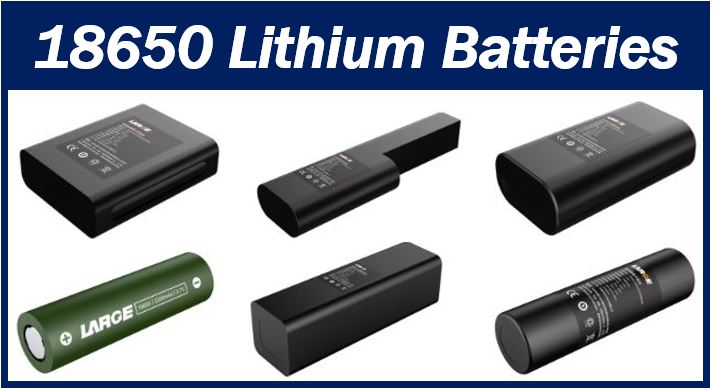Looking for the best battery can be a lengthy and even daunting task. When it comes to digital cameras, flashlights, and electric car batteries, the 18650 battery dominates. It is one of the top choices for consumers. The battery is rechargeable and provides the best performance.
According to the company website of www.large.net, this type of battery is produced by many manufacturers, and they all make them to the highest standards.

Before you start searching online, let’s learn a little bit about the 18650 battery:
Things you need to know about 18650 batteries
There are many types of lithium-ion batteries that offer compatibility with a wide range of electronic and electric devices such as laptops, flashlights, electric vehicles, electronic cigarettes, cameras, chain saws and even electric lawnmowers.
Most households keep a few spare in case one gets damaged or runs out of juice. Most consumers believe that it is one of the best batteries available in the marketplace today.
The 18650 battery is not only powerful but also small, i.e., it occupies relatively little space. In the world of batteries, lithium chemistry is right up there among the leaders.
Regarding its advantages, the 18650 lithium battery is:
- Extremely safe
- Non-polluting
- Non-burning
- Non-toxic
- It doesn’t explode
- It has a high temperature resistance
- When in an environment of less than sixty-five degrees, it has a discharge efficiency of 100%.
Famous brands for best 18650 battery
Virtually every famous battery brand makes the 18650. If you are not sure which company to go for, you should definitely choose one you have heard of, i.e., a household brand.
Below is a list of the most common or popular 18650 battery brands:
- Samsung
- LG
- Panasonic
- Sanyo
- Lishen
- Bak
- Large
Among the less well-known brands that offers top quality is Dongguan Large Electronics Co., Ltd, which sells a wide variety of batteries as well as other electronic items and also carries out repairs.
Range of the model, capacity, and voltage
There are many different types of lithium batteries with varying voltage and capacity levels. Below is some information regarding what is currently available:
Range of the voltage
The range of the voltage that you can get is, 3.7V, 5V, 6.4V, 7.4V, 9.6V, 11.1V, 12V, 12.8V, 14.8V, 18.5V, 19.2V, 22.2V, 22.4V, 24V, 25.6V, 25.9V, 36V, 48V, 60V, 72V & others.
Capacity
The capacity of the battery ranges from <1Ah, 1~5Ah, 5~10Ah, 10~20Ah, 20~50Ah, 50~100Ah, 100~200Ah, >200Ah & others.
Model
The following models are the most common 14500, 18500, 18650, 21700, 26650, 32650 (there are many more).
Since the advent of the Internet, how we shop has changed significantly. Today, you can either get your battery by walking into a bricks-and-mortar retail outlet or visiting a battery supplier online.
Lithium-ion batteries date back to the 1970s
Stanley Whittingham, a British chemist, first put forward the concept of lithium batteries in the 1970s while working for the American oil and gas multinational Exxon. Initially, the batteries he made were not practical. This changed when researchers began using only lithium compounds, which could accept and release lithium ions.
In 2019, John Goodenough, Stanley Whittingham and Akira Yoshino were awarded the Nobel Prize in Chemistry for “the development of lithium ion batteries.”
Batteries have been around a long time
We have been using batteries (non-lithium) for hundreds of years. Alessandro Volta, an Italian physicist, described the world’s first electrochemical battery in 1800 – the voltaic pile. It consisted of a stack of zinc and copper plates with brine-soaked paper disks in between. This battery was able to produce a steady electric current for quite some time.
Volta, however, did not know that the chemical reactions created the voltage. He mistakenly thought that the battery’s cells had an everlasting supply of energy. The battery would run out of juice due to corrosion, he thought.
In 1836, John Frederic Daniell, a British chemist, created the first practical battery. It became an industry standard and was used extensively by electrical telegraph networks.
Since those early days, battery technology has advanced significantly. What will we be using in one-hundred years’ time as a portable source of electrical energy? Maybe we will have gadgets that capture and release energy from the sun, their surroundings, friction, or something completely new.

